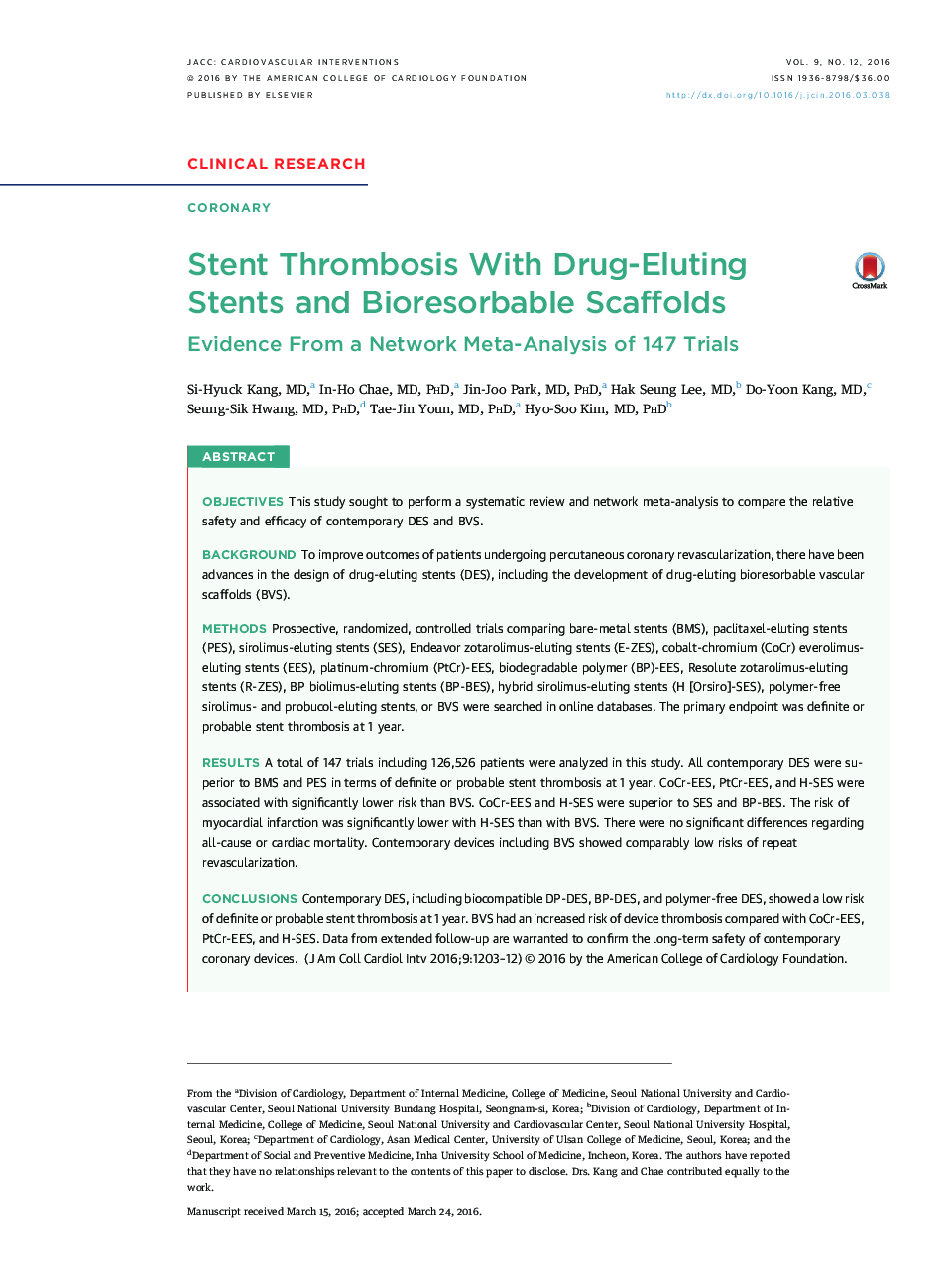| Article ID | Journal | Published Year | Pages | File Type |
|---|---|---|---|---|
| 2939623 | JACC: Cardiovascular Interventions | 2016 | 10 Pages |
ObjectivesThis study sought to perform a systematic review and network meta-analysis to compare the relative safety and efficacy of contemporary DES and BVS.BackgroundTo improve outcomes of patients undergoing percutaneous coronary revascularization, there have been advances in the design of drug-eluting stents (DES), including the development of drug-eluting bioresorbable vascular scaffolds (BVS).MethodsProspective, randomized, controlled trials comparing bare-metal stents (BMS), paclitaxel-eluting stents (PES), sirolimus-eluting stents (SES), Endeavor zotarolimus-eluting stents (E-ZES), cobalt-chromium (CoCr) everolimus-eluting stents (EES), platinum-chromium (PtCr)-EES, biodegradable polymer (BP)-EES, Resolute zotarolimus-eluting stents (R-ZES), BP biolimus-eluting stents (BP-BES), hybrid sirolimus-eluting stents (H [Orsiro]-SES), polymer-free sirolimus- and probucol-eluting stents, or BVS were searched in online databases. The primary endpoint was definite or probable stent thrombosis at 1 year.ResultsA total of 147 trials including 126,526 patients were analyzed in this study. All contemporary DES were superior to BMS and PES in terms of definite or probable stent thrombosis at 1 year. CoCr-EES, PtCr-EES, and H-SES were associated with significantly lower risk than BVS. CoCr-EES and H-SES were superior to SES and BP-BES. The risk of myocardial infarction was significantly lower with H-SES than with BVS. There were no significant differences regarding all-cause or cardiac mortality. Contemporary devices including BVS showed comparably low risks of repeat revascularization.ConclusionsContemporary DES, including biocompatible DP-DES, BP-DES, and polymer-free DES, showed a low risk of definite or probable stent thrombosis at 1 year. BVS had an increased risk of device thrombosis compared with CoCr-EES, PtCr-EES, and H-SES. Data from extended follow-up are warranted to confirm the long-term safety of contemporary coronary devices.
